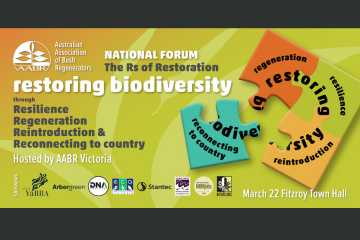Ray Thomas continues his comments on making progress in the United Nations Decade of Ecosystem Restoration. With his experience in large-scale restoration/reconstruction works in the Regent Honeyeater Project, there may be some helpful ideas to share…specifically, what were the factors that enabled the on-ground works to scale up to such a large degree?
A highly significant guide for how I approach working with the community was some Swiss research into effective Environmental Education. Rather than design a study that would follow people for the next 20 years, they did a retrospective study. They looked at the background of people who were already engaged in environmental work. The research identified two common threads in the subjects’ past experience:
- as children, these people were out in nature a lot, just having fun and enjoying it – not necessarily studying it. That enjoyment of nature became a life-long value, which no-one could take from them.
- somewhere in the past they had been part of a group taking action on some local issue, and together they had pulled it off! Regardless of the focus (social, political, educational, sporting, or whatever), they’d had a win, and trusted that they could do it again.
So when an environmental issue came up, they jumped in!! People’s actions are always protecting internalised values, and it’s doubly powerful when there is a belief-in-self to take action.
This is empowerment; it is not fear-driven.
For comparison, the Swiss researchers also investigated people whose main environmental exposure was learning about global ecological issues and the serious consequences. These people investigated the problems to understand what it means for them, but it didn’t lead to restoration works; it leads to hopelessness or protest actions. ( Matthias Finger, Journal of Social Issues, Fall edition 1994).
I think this has huge implications for our community engagement work. My nest box work was to benefit the wildlife for sure, but it had a bigger picture benefit as well. Seeing wildlife up so close really touched people’s hearts, and they were eager to help in our large-scale projects.
The driving force is bottom-up, never top-down…
The next article will look in more detail at the nitty-gritty of our on -ground works, and how we engaged so many people to help.
Ray Thomas.






Leave A Comment